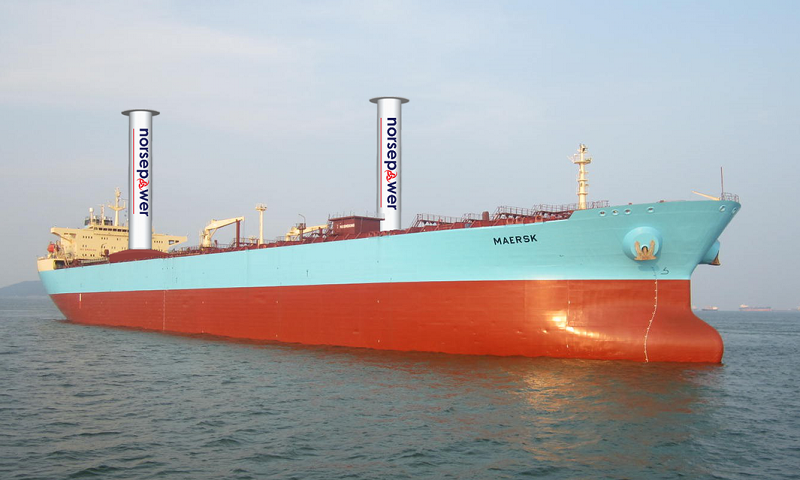‘Spinning sail’ rebooted to cut fuel and make ocean tankers greener

An ocean-going tanker is to be fitted with a type of “spinning sail” invented almost a century ago in a step that could lead to more environmentally friendly tankers worldwide. The unusual sails are rotating columns fixed to the deck of the ship, whose interaction with the wind provides forward thrust. The trial is backed by Maersk, one of the world’s biggest shipping companies and Shell’s shipping arm. International shipping runs largely on highly polluting “bunker” fuel and the industry is coming under increasing pressure to play its part in tackling climate change by reducing emissions. Technologies being explored to cut pollution include kites, batteries or using biofuels. The spinning, or rotor sail, was invented by the German engineer Anton Flettner and he put it into practice on two ships, one of which crossed the Atlantic in 1926. It propels the ship because when wind passes the spinning rotor sail, the air flow accelerates on one side and decelerates on the opposite side, creating a thrust force perpendicular to the wind direction. The rotor sails being installed on a 240 metre-long Maersk tanker are modern lightweight versions produced by the Finnish company Norsepower. They will be 30 metres tall and 5 metres in diameter, the largest rotor sails ever deployed and the first to be used on a tanker. In favourable wind conditions, each rotor sail can produce the equivalent of 3MW of power, much more than the 50kW of electricity needed to turn it, said Norsepower’s CEO, Tuomas Riski. If the wind direction reverses, the rotation of the sail can be also be reversed. Riski said that overall fuel savings of 7-10% were expected, equivalent to about 1,000 tonnes of fuel a year: “We are pretty confident we are in this kind of range.” The company has already deployed its rotor sails on a roll-on/roll-off ferry and saw a saving of 6%.

